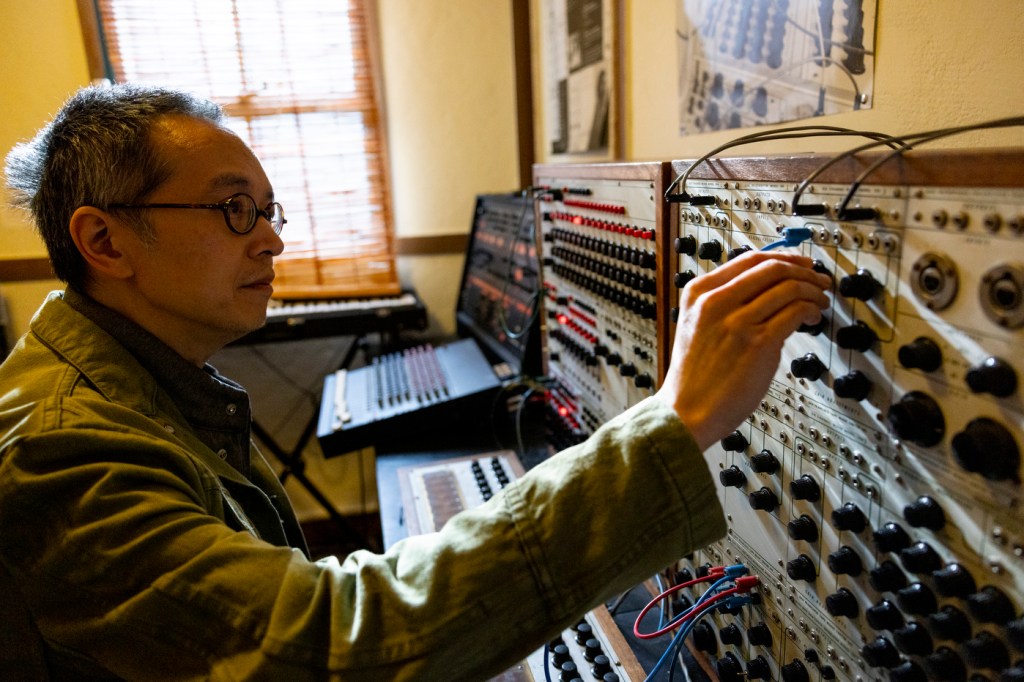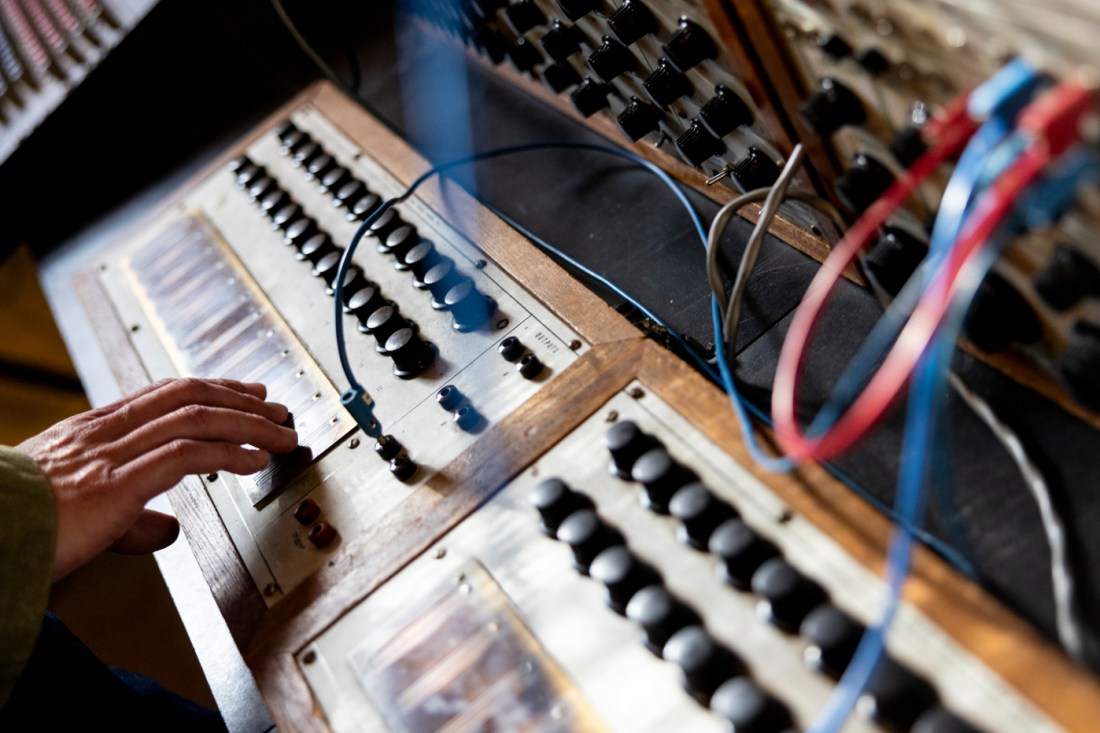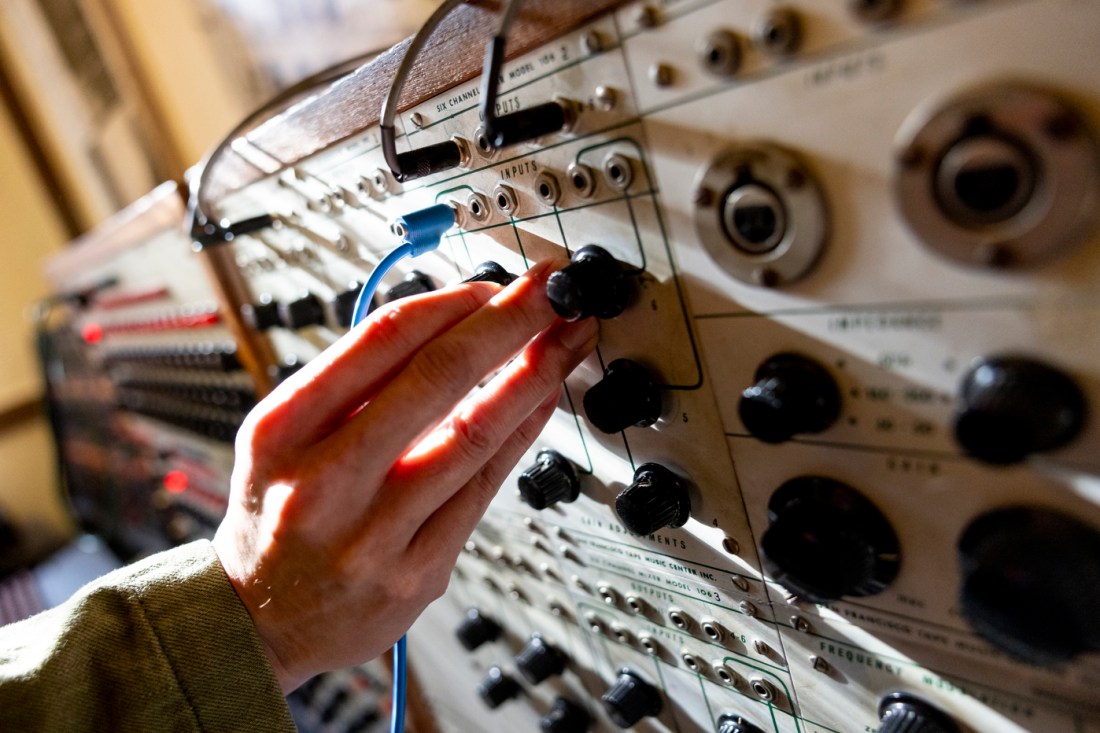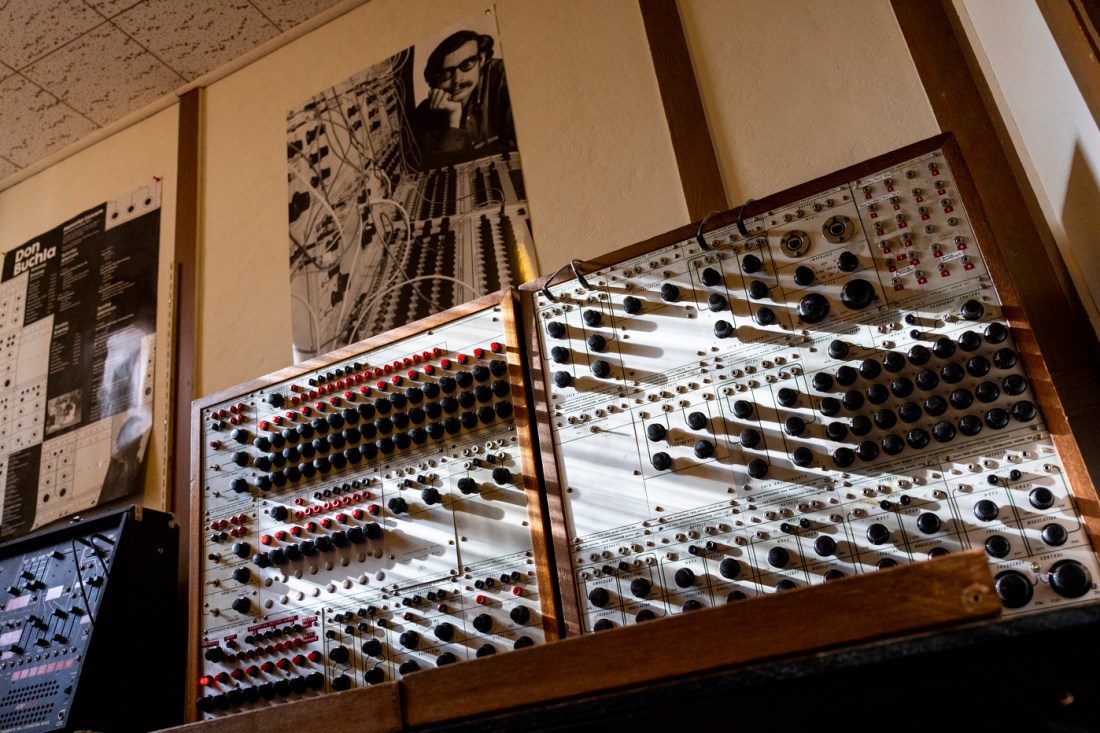Original synthesizer built by music pioneer Don Buchla
a big hit with students on Northeastern’s Oakland campus
A piece of music history, the first synthesizer built by Don Buchla is located on Northeastern’s Oakland campus. Built in 1963, the instrument was commissioned by composers Ramon Sender and Morton Subotnick for their electronic music studio in San Francisco.

OAKLAND, Calif. — Days before the end of the fall semester, first-year student Cullen Thurston was sitting in a small room in Northeastern University’s Center of Contemporary Music on the Oakland campus, recording his final tracks on a 60-year-old modular synthesizer.
It’s a piece of music history: the original Buchla 100, the first synthesizer built by Don Buchla and one of the first synthesizers invented.
Built in 1963, the instrument was commissioned by composers Ramon Sender and Morton Subotnick for their electronic music studio, the San Francisco Tape Music Center.
As Center for Contemporary Music director James Fei calls it, the Buchla 100 is a “mythical instrument.”
When Buchla built the synthesizer, answering an ad by Sender and Subotnick, he was an engineer and physicist with an interest in making tape music. Today, he’s known as one of the pioneers in electronic music.
Sixty years after its inception, the most remarkable thing about the Buchla 100 isn’t its quality, nor the array of inputs, outputs and switches, but the fact that students still use it to this day.



Featured Posts
“It’s a niche part of music history, but for the people who understand it, it’s pretty crazy to show them something I’d recorded on the first Buchla,” Thurston says. “Even my dad was in awe that I was able to play something like this, and I’m also in awe. It’s super cool just to touch the same synthesizer that the original maker of it touched as well.”
Fei has been teaching students to use the fabled instrument since he started at the college in 2006. Maintenance for a vintage synthesizer can be tricky, not to mention expensive, so Fei and audio visual coordinator Aaron Oppenheim show students how the instrument works and how to take care of it to preserve its functionality.
“For a historic and maybe archaic instrument, it’s still very tactile, very fast,” Fei says, sitting in front of the synthesizer on a gray Oakland afternoon. “It also creates sounds that just don’t sound like anything else, which is why it’s not just a museum piece. It’s actually something that’s still interesting and still does things you can’t really do on another instrument.”
The Buchla 100 was manufactured in small quantities mainly for universities, sent to Columbia University and Princeton University for music scholars to play and experiment with. Back then, the instrument cost more than a car, Fei says. Synthesizers became more accessible in the next decade as the technology digitized, leaving analog synths to collect dust.
But the original Buchla is far from a retired relic.
Editor’s Picks
Thurston has been playing the Buchla since moving to the Oakland campus, finding time between classes to fiddle with the knobs to coax the hums, beeps, beats and chirps out of the instrument, producing robotic or even bird-like sounds. The modules on the Buchla allow the composer to change the pitch, intensity and amplitude of the sound, with a voltage-transmitting copper touchplate reacting to changes in pressure.
Despite how daunting the many buttons and plugs may appear, Fei says it’s an intuitive machine when one begins to play around with it.
Thurston agreed. While he found it initially challenging to play the Buchla, with its quirks and imperfections, he says that eventually using the technology felt natural.
“I was introduced to it as being almost primitive,” Thurston says. “It can’t produce super interesting sounds, but the act of playing it in its historical context is super cool.”
In learning how to use the Buchla with Oppenheim, Thurston learned how to patch cables into each input and output, and how to use the Buchla’s sequencer and the tone generator. The learning process was easy enough, he says, even without markers on the knobs or specific frequencies the machine can be tuned to automatically. The system is entirely manual.
While digital synthesizers have a broader range of tools and abilities, the limitations are what make the Buchla stand out.
“You have to make all the connections, which is good because you’re actually forced to think about new ways of making connections, because it doesn’t just give you a prescribed way,” Fei says. “Sometimes you would come up with weird ideas that don’t really make sense to other people, but it makes perfect sense to you. There’s so much creativity.”
Fei, who has recorded projects on the Buchla as well, says the intention behind playing the Buchla isn’t to make it sound the same as a modern instrument, but instead to figure out what one can do on the system even with the limitations of the interface.
The analog capabilities and quality of sound are part of why Thurston and Fei enjoy the Buchla, and why analog systems are making a steady comeback in the music world.
Fei says he’s noticed a resurgence of analog synthesizers in the last 10 to 15 years, spurring an interest in the instrument that rivals its popularity in the late 1970s and ’80s, when digital synthesizers became mainstream and rendered the Buchla “old fashioned and clunky.”
Before arriving on the Oakland campus, Thurston didn’t know about the university’s music program. When he realized how expansive it was, he sought out Fei and Oppenheim. Fei hopes students who are interested in electronic music will check out the Buchla and invest time into learning the system. The instrument is an “amazing resource,” Fei says.
“It isn’t a keyboard that you turn on and press preset one and get something,” he says. “You need to invest some time just to get it to do something. But that’s also the payoff, when you understand how it works. You can start making a weird idea and then you try it out and it does something completely different from what you thought.”
By the end of the semester, Thurston had accumulated recordings with the instrument that he hopes to use in a song in the future.
“Use those spaces and work with the Buchla as much as you can, especially if you’re a Global Scholar coming next semester,” he says. “It’s very valuable time and I wish I’d had more of it.”





